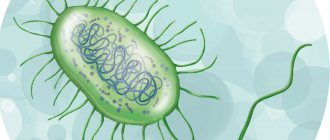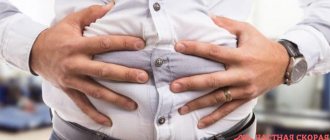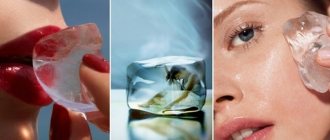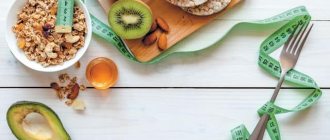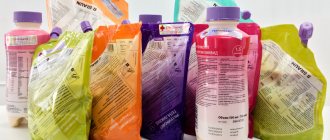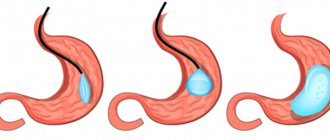This tale is about how an alcoholic diet for weight loss can help burn fat. If you believe the reviews, this method gets rid of 5-7 kilos in seven days. Let's talk about why it is proposed to use alcohol for weight loss, how much and what kind of drinks you should drink, what menu to make, and how an alcoholic diet for weight loss can affect the body.
Hello friends! Do you know why real alcoholics are often thin? They are so dependent on the “green serpent” that they can no longer eat. Such a person drank, he felt good and he didn’t want anything else. Since our goal is not just to become thin, but to maintain health at the same time, an alcoholic diet for weight loss should not seduce us too much. But what is its essence?
I'll tell you about this.
Friends, read the article further, there will be a lot of interesting things in it!
And for those who want:“KNOW THE DEGREE OF SLUGGING IN YOUR BODY”
Take a TOXIN TEST .
The essence of the alcohol diet
In small doses, alcohol-containing drinks help break down fats and prevent their deposition.
Under the influence of ethanol, unhealthy food is better absorbed by the body and transformed into energy.
An alcoholic diet for weight loss is effective if you follow the basic principles:
- Drink quality alcoholic drinks after dinner or instead of it.
- Do not exceed the daily amount of alcohol - 50–150 ml (depending on the strength of the drink).
- Eat often (4-6 times a day), but in small portions.
- Avoid consumption of animal fat (lard, cheese, butter).
- Provide your daily calorie intake (no more than 1000–1200 kcal).
- Drink plenty of fluids - 6-8 glasses of still water per day.
- Avoid flour, fried, salty and fatty foods.
- Get a full night's sleep (8-9 hours).
- Boil food, bake it, steam it, just don’t fry it.
- Increase the amount of fresh fruits, vegetables, and herbs in your diet.
Meal options with alcohol are best used after consultation with a nutritionist. It is important to provide moderate physical activity (running, exercise equipment, swimming) after finishing the diet - 2-3 times a week.
Advantages and disadvantages
Drinking alcohol daily to lose extra pounds has its pros and cons. Benefits of the diet:
- rapid weight loss;
- no strict dietary restrictions;
- relaxation of the nervous system;
- inexpensive diet;
- low risk of failure;
- decreased appetite;
- reducing cravings for sweets.
Disadvantages of nutrition with alcoholic beverages:
- the appearance of drowsiness;
- monotonous diet;
- risk of addiction to alcohol;
- weight gain (if used incorrectly);
- a large list of contraindications;
- risk of intoxication of the body.
How much weight can you lose with alcohol?
The effectiveness of the diet depends on the number of calories, intensity of physical activity, and initial weight.
According to reviews of those losing weight, a weekly combination of food and alcohol intake gives a weight of 5-7 kg.
The result depends on the drink used:
- whiskey, vodka – 3–4 kg;
- dry red wine – 5–6 kg;
- cognac – 4–5 kg.
Alcoholic liver disease
Forms
Alcoholic liver disease manifests itself in only two forms: progressive and persistent. Each form has its own characteristics.
Progressive form
Occurs in three stages:
- light;
- average;
- heavy.
In this form, liver damage occurs, which almost always leads to cirrhosis. If you stop drinking alcohol in a timely manner when primary symptoms are detected, you can completely stabilize the situation. But you cannot do without proper treatment and preventive measures. But even with this approach, relapses and the manifestation of residual effects are possible. Once alcoholic liver disease is detected, symptoms and treatment
must be determined by a doctor, and all restorative procedures must be performed by him.
Persistent form
This form of the disease is considered stable. That is, if you stop drinking alcohol in a timely manner, you can completely stop the development of inflammatory processes. Otherwise, the disease will develop into a progressive form with all the ensuing consequences. To identify this form of alcoholic hepatitis, it is necessary to undergo a series of laboratory tests, since it occurs without pronounced symptoms.
Causes
The disease develops due to uncontrolled alcohol consumption. As a result, ethyl contained in alcohol enters the body. In fact, it is poisonous to the human body. It enters the stomach and liver, where it is broken down and eliminated from the body naturally. But if alcohol is consumed regularly, the body does not have time to cope with its processing and elimination. Thus, toxic substances accumulate in the liver, causing various diseases.
The main causes of liver disease:
- prolonged consumption of alcohol in large doses;
- genetic predisposition;
- liver diseases, past or present.
All this leads to the onset of the first stage of alcoholic liver disease. And if you do not start timely treatment, it will go into other stages, which will be difficult to cope with.
Stages of alcoholic liver disease
There are three of them: steatosis, alcoholic hepatitis, cirrhosis.
Liver steatosis
This is the first stage - alcoholic fatty liver disease. It develops in almost all people who drink alcohol excessively. If you stop drinking, the organ’s condition will return to normal within a few weeks without medical intervention. But if you continue to drink alcohol, alcoholic hepatitis will develop first, then cirrhosis of the organ.
Alcoholic hepatitis
At this stage, subacute inflammation of the liver develops. It is characterized by the appearance of giant mitochondria, Mallory bodies, and fibrosis develops. The disease occurring at this stage is accompanied by disruption of the liver, and ultimately cirrhosis develops. Complications such as bleeding from varicose veins very often occur. This is a symptom that the disease is progressing and requires immediate treatment by contacting a medical center.
Cirrhosis of the liver
The last stage of the disease, which develops very often in alcohol dependent people. Accompanied by massive fibrosis and disorders of the basic functions of the liver. Leads to the development of portal hypertension. The risk of developing other diseases, for example, hepatocellular carcinoma, increases significantly. As a result, this leads to death.
Diagnostics
After identifying symptoms of alcoholic liver disease, you should contact a medical center and undergo a full diagnosis. It begins with taking a medical history to identify the frequency and amount of alcohol consumed. The doctor asks leading questions that must be answered as truthfully as possible. This stage determines what next steps the doctor will take to diagnose and correct the problem.
Blood tests are then ordered. Laboratory tests can reveal the condition of the liver and what measures can be taken to normalize it. After this, an ultrasound examination of not only the liver, but also the abdominal cavity is required. A number of other additional studies are being conducted:
- MRI;
- dopplerography;
- CT scan;
- radionucleic acid test.
It is possible to conduct instrumental studies, which include a biopsy, study the size and shape of the liver, and most importantly, identify changes occurring in it. It is the biopsy that gives the final answer about the condition of the liver, after which the doctor develops a treatment strategy.
Treatment of alcoholic liver disease
If alcoholic liver disease is detected, treatment at an early stage can prevent its development and even restore the organ to full function. When the disease progresses to other stages, treatment consists of relieving symptoms and preventing the progression of the disease. Preventive measures are required to prevent complications.
The most important factor in treatment, which speeds up the entire process and guarantees complete recovery, is complete abstinence from drinking alcohol. In addition, this will significantly improve the general condition of a person and relieve him of early stage alcoholic liver disease.
The main method of treating the liver is honey. center consists of a special diet and the use of multivitamin complexes. In case of severe anorexia, nutrition is provided by a specialized tube. Detoxification is important. For this purpose, drug therapy is carried out using solutions of pyridoxine and glucose. Drugs are used that can regenerate liver cells to restore its functionality.
Treatment includes taking corticosteroids. They are especially relevant in acute or severe forms of alcoholic liver disease and when the patient’s life is in danger. Ursodeoxycholic acid is prescribed as a hepatoprotector, which helps regulate lipid metabolism. But in addition to such treatment, it is necessary to normalize the patient’s psychological state. For this purpose, heptral is used.
The last stage of treatment is restorative procedures:
- reflexology;
- physiotherapy
- electrophoresis;
- massage therapy;
- Exercise therapy.
As a last resort, surgical correction is used, but more often they do without it. If the disease is advanced, a liver transplant will be required. Before starting such an operation, alcohol consumption is prohibited for 6 months (prior to its start). The final results are entered into the medical history, where liver cirrhosis and alcoholic etiology are also recorded.
You should not self-medicate. At the first signs of alcoholic liver disease, you should contact a medical center to receive qualified help. This will help achieve full recovery.
Complications
Alcoholic liver disease leads to complications such as:
- hepatic encephalopathy;
- bleeding in the gastrointestinal tract;
- renal failure.
Liver cancer may develop. Complications always lead to serious consequences, and without timely elimination, death is possible. To avoid them, you must follow simple prevention rules.
Prevention of alcoholic liver disease
The recommendations of the attending physician must be strictly followed. The main rule of prevention is to avoid drinking alcohol. Even if the liver is already damaged, quitting alcohol will normalize its condition. Do not forget that most patients die from alcoholic liver disease within 5 years. Therefore, preventive measures are extremely important.
Prevention is not just about giving up alcohol. To prevent the disease from moving to another stage, it requires timely treatment at a medical center. And for this it is recommended to undergo regular diagnostics. Well, the most important thing is proper nutrition, which should be developed by an experienced nutritionist.
Diet for alcoholic liver disease
The main thing with a diet is to balance the metabolism and protect the liver from harmful factors that lead to its destruction. Meals should include proteins and carbohydrates. Do not overuse fried, spicy and fatty foods. It is not recommended to overeat. The most healthy dishes are steamed or boiled. Baked and stewed foods won't hurt. Salt cannot be used.
The following vegetables and fruits have an effective effect on the liver:
- cabbage;
- beet;
- pears;
- carrot;
- apples.
You can eat meat, but lean meat: beef and veal are perfect. The fish should be lean and boiled. Milk - low fat content, cottage cheese and sour cream - will not harm (in small quantities).
The following should be excluded from the diet:
- Rye bread;
- bouillon;
- canned food;
- garlic;
- mushrooms;
- legumes;
- pickled vegetables;
- salo;
- sausages;
- margarine;
- coffee and cocoa;
- chocolate.
The diet must be selected individually, with a nutritionist. Therefore, it is necessary to contact a medical center to receive detailed recommendations on proper nutrition.
Who is the alcohol diet suitable for?
This weight loss option is best used while at home. Alcohol when losing weight is suitable for physically and mentally healthy people who are not prone to mood swings and increased blood pressure. Contraindications:
- chronic alcoholism or predisposition to it;
- liver disease (cirrhosis);
- renal failure;
- disturbances in the functioning of the endocrine system;
- Gastrointestinal diseases (gastritis, stomach ulcer);
- pregnancy, breastfeeding;
- mental disorders;
- age under 18 years;
- diabetes;
- use of medications.
What alcohol can you drink if you have gout?
Doctors are unanimous in the opinion that drinking and joint diseases are incompatible concepts. Still, many find it very difficult to give up meat dishes and strong drinks after diagnosis. They try to find that optimal balance that will not deprive them of their usual pleasures and will not cause aggravation of their well-being.
Some try whiskey and rum, others try homemade liqueurs. There is a popular belief that elite alcoholic drinks do not cause new attacks. But this is refuted by the patients themselves, who note the presence of a direct connection between this bad habit and severe gouty attacks.
This is especially evident in the first months after diagnosis. During this period, strict adherence to a low-purine diet is very important, which inhibits further development and reduces unpleasant symptoms. The disease is difficult to treat, and it will never be possible to completely get rid of it. Therefore, you will have to adhere to menu restrictions and give up some unwanted preferences in food and drink forever.
Is it possible to drink strong alcohol if you have gout?
For a long time, some rheumatologists considered it acceptable to consume vodka for such a diagnosis in small doses of up to 50 grams. They argued that since it does not contain purines, small amounts would not cause serious consequences.
But practice has proven the opposite. Patients, drinking vodka, experience temporary relief and gradually increase the frequency of intake and the permissible dosage. And this causes severe disruptions in the functioning of internal organs and systems. The heart, blood vessels, liver, kidneys, and pancreas suffer from toxins.
Organs affected by the breakdown products of ethyl alcohol cannot cope with their functions. The kidneys and liver, which are destroyed by toxins, do not fulfill their antitoxic purpose. As a result, the concentration of harmful compounds and urates increases several times. Their excess amount settles in joints and tissues in the form of salt deposits and stones.
Low-grade and adulterated vodka is especially dangerous for gout, which can provoke poisoning and new attacks. But even premium varieties cause allergies, disruptions in the excretory system and deterioration in well-being.
How does wine affect the patient's condition?
For a long time, doctors, when asked whether it is possible to drink alcohol if you have gout, answered that it is permissible to drink wine. Subsequently, scientific and practical research showed the inconsistency of this theory for a number of reasons:
- red wine varieties are dangerous because they supply the circulatory system with free purines, which are then distributed throughout the body;
- tartaric acid significantly reduces the ability to dissolve uric acid compounds;
- ethyl alcohol negatively affects the functionality of the liver and kidneys;
- When drinking wine, it is very difficult to predict the effect of medications on a person and the occurrence of adverse reactions.
If previously preference was given to white varieties, it has now been proven that they are no less dangerous and cause gouty pathologies more often than cognac and vodka.
Is beer allowed for joint disease?
Many believe that the ban on alcohol for gout does not apply to low-alcohol liquids. That’s why they allow themselves to have a glass of beer even during inflammatory processes. However, this cannot be done for a number of reasons:
- beer contains a high percentage of purines, therefore increases the concentration of uric acid;
- due to the diuretic ability of the product, viscosity in the blood increases, as a result, toxins and urates accumulate;
- Cartilage and joint tissue suffer from dehydration, since the removal of harmful substances is difficult, they settle in the form of salt deposits;
- drinking a foamy drink has a negative effect on the functioning of the liver and kidneys, which slows down the elimination of toxic compounds.
Important ! Non-alcoholic beer is in no way inferior to its intoxicated counterpart in terms of purine content: the concentration of this dangerous compound is almost the same in both varieties. Therefore, addiction to beer of any kind increases the likelihood of crisis pathologies of the disease by 50%.
What kind of alcohol can you drink for weight loss?
Low-calorie alcoholic drinks with minimal sugar content and low strength are suitable for weight loss. Recommendations for selection:
- Brut (dry sparkling wine) is suitable for champagne.
- The best drink for a diet is dry and semi-dry red wines, which contain a minimum of calories, improve blood circulation, and prevent blood clots.
- Of all types of beer, you can take light beer, with a strength of no more than 5%.
Low calorie alcoholic drinks
The lower the strength of the alcohol, the less sugar it contains. Low calorie alcohol:
| Drink name | Calorie content, kcal/100 ml |
| Dry red wine | 67 |
| Gin and tonic | 88 |
| Dry white wine | 66 |
| Beer 1.8% | 29 |
| Champagne brut | 85 |
| Cocktail "Mojito" | 70 |
| Beer 2.8% | 39 |
| Sweet white wine | 98 |
| Martini "Royal Bianco" | 73 |
| Absinthe | 83 |
| Beer 4.5% | 45 |
| Cocktail "Cosmopolitan" | 100 |
Nutrition rules
To get rid of unnecessary pounds, follow the nutritional recommendations:
- Drink low-calorie alcohol once a day.
- To reduce calories, mix in a 1:2 ratio - martini with water, whiskey with soda, cognac with Diet Coca-Cola.
- Consume no more than 20 g of vegetable oil per day.
- Eliminate sugar and salt from your diet.
- Don't replace food with alcohol.
- Compose your diet primarily from protein foods.
- Do not eat after drinking an alcoholic drink. This will increase your hunger.
- Exit the diet correctly - gradually increase food portions, drink unsweetened tea, rosehip decoction in addition to water.
Table of permitted and prohibited products
An alcohol diet is effective when combined with healthy foods. The following products are recommended for consumption and exclusion from the diet:
| Prohibited | Allowed |
| Lard, pork, goose, duck | Veal, chicken, turkey |
| Caviar, salmon | Cod, pollock |
| Fatty dairy products | Low-calorie dairy products |
| Pasta, white bread | Buckwheat, millet, oatmeal |
| Sweets, baked goods, baked goods | Rye bread, toast |
| Preservation, marinades, hot spices, sauces | Vegetables, fruits, eggs |
| Butter, mayonnaise | Olive oil, vinegar |
| Coffee, sweet drinks | Green tea, rosehip decoction |
Don't overeat during a hangover
Hangovers are another challenge for people who are on a diet. The day after drinking alcohol, you have to fight the urge to eat something high-calorie and fatty. One of the reasons for this passion for harmful things is dehydration. Because of it, we feel hunger more acutely.
“After a party, the body needs a lot of energy to process all the alcohol drunk. That's why fatty foods look very appealing during a hangover,” says Dr. Jason Burke.
To avoid overeating, don't forget:
- after drinking an alcoholic drink and before going to bed, drink a glass of water;
- Snack on something rich in fiber and protein before and after the party.
Alcohol diet menu
The diet of this diet is not very varied. But a diet with alcohol comes in different options. The choice depends on the person’s taste preferences and weight loss goals. Diet options:
- For whiskey - drink 1 glass in the evening, after a meat dish. Keep in mind that the calorie content of 100 ml of drink is 220 kcal.
- With a martini - drink a glass with dinner after a fruit platter.
- For alcoholic cocktails - use lime, lemon, mint juice to prepare drinks.
- With Wine – Pair red wine with cheese, which satisfies your body's protein needs.
Losing weight on whiskey
This diet option is suitable for men. Sample menu for 1 day:
- Breakfast : steam omelette – 150 g, hard cheese – 50 g, green tea – 150 ml.
- Lunch : orange.
- Lunch – solyanka – 150 g, vegetable salad – 100 g, bran bread – 20 g, rosehip decoction.
- Afternoon snack : kefir – 150 ml, apple.
- Dinner : boiled chicken breast without skin – 200 g, lettuce – 2 pcs., whiskey – 50 ml.
Martini for weight loss
Vermouth is preferred by women. When dieting, Martini replaces sweets without harming your figure:
- Breakfast : low-fat yogurt – 100 g, cereal toast, grapefruit juice – 150 ml.
- Snack : hard-boiled egg.
- Lunch : vegetable soup – 200 ml, chicken cutlet – 100 g, berry juice without sugar – 100 ml.
- Snack : baked beets – 80 g.
- Dinner : fruit salad – 100 g, martini – 150 ml.
Diet on alcoholic cocktails
This food option is suitable for lovers of multi-ingredient alcoholic drinks:
- Breakfast : oatmeal with water – 150 g, cottage cheese – 100 g, tea with milk – 150 ml.
- Lunch : baked apple.
- Lunch : lean borscht – 150 g, fish baked with cauliflower – 100 g, kefir – 100 ml.
- Afternoon snack : salad of tomatoes and cucumbers – 150 g.
- Dinner : alcoholic cocktail – 250 ml.
Fasting day on wine
A one-day diet using wine involves drinking 0.5 liters of dry white or red wine and 300 g of hard Adyghe cheese or tofu:
- Breakfast, dinner : 60 g of cheese and 100 ml of wine;
- Lunch : cheese 120 g, wine 200 ml;
- 2 snacks : 30 g of cheese and 50 ml of wine.


